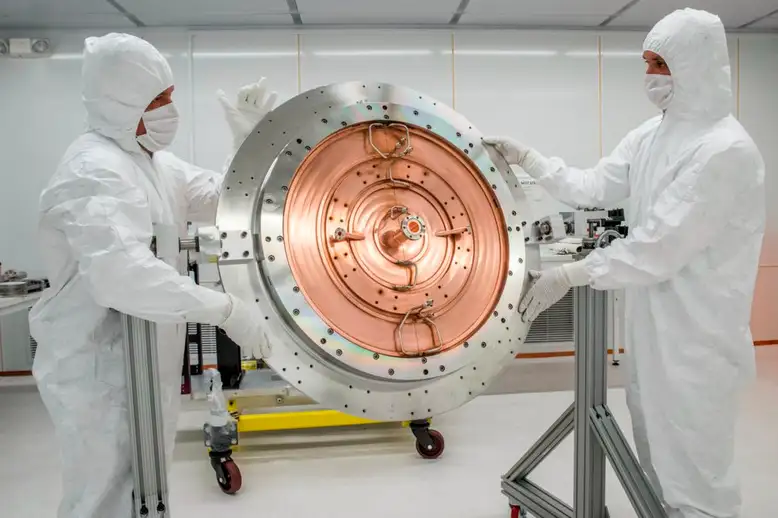In early 2023, the SLAC National Accelerator Laboratory in California will use high-speed electrons to generate the most intense X-rays ever observed on Earth. These X-rays, produced in a tunnel using the upgraded Linac Coherent Light Source (LCLS) X-ray laser, will enable researchers to study atoms and molecules in unprecedented detail. The LCLS X-ray laser is the fastest and most powerful in the world, as reported by New Scientist.
The LCLS-II is a hard X-ray free-electron laser (XFEL) capable of producing high-resolution, ultrafast images of microscopic objects. Its predecessor, the LCLS, has been used for a variety of purposes, including imaging viruses, simulating the conditions at the center of a star, vaporizing water into plasma states hotter than the Earth's core, creating extremely loud noises, and producing "diamond rain" similar to that which may occur on planets like Neptune.
LCLS-II Development
The second phase of LCLS-II, which has recently been completed, is expected to have significantly greater capabilities than its predecessor. The new instrument will be able to produce X-ray pulses that are, on average, 10,000 times brighter than those of the original LCLS, and it will be able to generate a million of these pulses every second, compared to the mere 120 pulses per second produced by the original.
In just a few hours, LCLS-II will produce more X-ray pulses than the current laser has produced in its entire lifespan, according to Mike Dunne, the director of LCLS. This increased capacity will allow researchers to collect data that previously might have taken months to gather in just a matter of minutes, significantly advancing the field of X-ray science and enabling the development of new technologies to address major societal challenges.
LCLS-II operates using a similar principle to the original LCLS. Electrons are generated and accelerated through a pipe, where they enter an "undulator" that causes them to oscillate and emit X-rays. However, the new instrument has improved each step of this process. The most significant change is the upgraded accelerator. While the original LCLS used a copper pipe at room temperature to fire the electrons, LCLS-II uses a set of 37 cryomodules cooled to almost absolute zero (-271°C/-456°F) using liquid helium from two large cryoplants. This cooling allows the equipment to function at a higher energy level, resulting in brighter and more powerful X-ray pulses.

The electron gun that powers the Linac Coherent Light Source-II X-ray laser
ALSO READ: Novel X-Ray Spectrometer Designed to Examine High-Density Energy Plasmas
Producing Hard and Soft Rays
At extremely low temperatures, the niobium metal cavities within the cryomodules become superconducting, allowing the electrons to pass through with no resistance. Microwaves create an oscillating electric field that resonates inside these cavities, which synchronizes with the rhythm of the passing electrons and transfers energy to them. This added energy increases the speed of the electrons so that by the time they pass through all 37 of the cryomodules, they move at nearly the speed of light.
After passing through the accelerator, the high-energy electrons enter the undulators, which use strong magnets to cause the electrons to oscillate and emit X-rays. The new undulators can produce both "hard" and "soft" X-rays, which have different uses - hard X-rays can be used to image individual atoms in detail. In contrast, soft X-rays can reveal energy flow between atoms and molecules.
The cryomodules reached their low temperature in April, and the team is now preparing to test the instrument using the first electrons. It is expected that LCLS-II will begin producing X-rays later this year, and it is hoped that the facility will provide new insights into fields such as chemistry, biology, computing, and quantum mechanics, as stated by the organization in their statement.
RELATED ARTICLE: Spintronic X-Ray Microscope Developed As An Ultrafast Device for Speedier, More Efficient Lab Works
Check out more news and information on X-Rays in Science Times.














